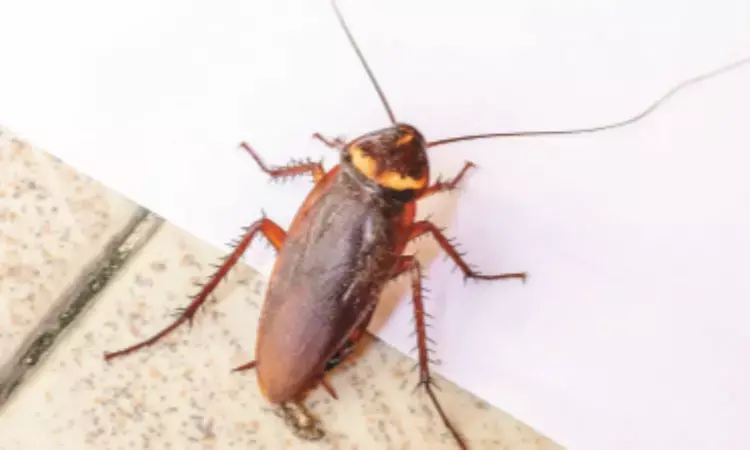- Home
- Medical news & Guidelines
- Anesthesiology
- Cardiology and CTVS
- Critical Care
- Dentistry
- Dermatology
- Diabetes and Endocrinology
- ENT
- Gastroenterology
- Medicine
- Nephrology
- Neurology
- Obstretics-Gynaecology
- Oncology
- Ophthalmology
- Orthopaedics
- Pediatrics-Neonatology
- Psychiatry
- Pulmonology
- Radiology
- Surgery
- Urology
- Laboratory Medicine
- Diet
- Nursing
- Paramedical
- Physiotherapy
- Health news
- Fact Check
- Bone Health Fact Check
- Brain Health Fact Check
- Cancer Related Fact Check
- Child Care Fact Check
- Dental and oral health fact check
- Diabetes and metabolic health fact check
- Diet and Nutrition Fact Check
- Eye and ENT Care Fact Check
- Fitness fact check
- Gut health fact check
- Heart health fact check
- Kidney health fact check
- Medical education fact check
- Men's health fact check
- Respiratory fact check
- Skin and hair care fact check
- Vaccine and Immunization fact check
- Women's health fact check
- AYUSH
- State News
- Andaman and Nicobar Islands
- Andhra Pradesh
- Arunachal Pradesh
- Assam
- Bihar
- Chandigarh
- Chattisgarh
- Dadra and Nagar Haveli
- Daman and Diu
- Delhi
- Goa
- Gujarat
- Haryana
- Himachal Pradesh
- Jammu & Kashmir
- Jharkhand
- Karnataka
- Kerala
- Ladakh
- Lakshadweep
- Madhya Pradesh
- Maharashtra
- Manipur
- Meghalaya
- Mizoram
- Nagaland
- Odisha
- Puducherry
- Punjab
- Rajasthan
- Sikkim
- Tamil Nadu
- Telangana
- Tripura
- Uttar Pradesh
- Uttrakhand
- West Bengal
- Medical Education
- Industry
Children with asthma exposed to indoor pest allergens may face respiratory issues: Study

USA: A longitudinal study has revealed that indoor allergen exposure to pests like mice and cockroaches (but not dogs and cats) is linked with the occurrence of upper respiratory infections (URIs) and associated pulmonary outcomes in children with asthma.
"Mouse allergen concentration (OR 1.58) and cockroach allergen concentration (OR 1.79) was associated with URI with reduced lung function in 90 mostly Black kids sensitized to allergens," Darlene Bhavnani, PhD, MPH, of Dell Medical School at the University of Texas at Austin reported during the American Academy of Allergy, Asthma & Immunology (AAAAI) annual meeting.
The researchers also observed associations between these allergens and symptomatic URI, but these were not statistically significant. Findings also revealed an association between mouse and cockroach allergen concentrations and URI with pulmonary eosinophilic inflammation. However, cat and dog allergen concentrations were not associated with URI outcomes.
Previous research has shown that Black children more often report URIs compared with white children with asthma. Similar disparities have also been observed for food allergies. It is suggested that certain environmental allergen/irritant exposures are more common in disadvantaged communities of colour and may lead to differences in susceptibility to URI.
The research team used longitudinal data collected from sensitized children in the Environmental Control as Add-on Therapy for Childhood Asthma study. The study included 90 participants: 60% were male, 92% were Black, and 92% had public health insurance.
Allergen concentrations were measured in the home air samples (mouse) and settled dust (cat, cockroach, and dog) taken at baseline, 3, and 6 months. At clinic visits that occurred every two months from baseline to 6 months, patients were assessed with nasal mucus samples and spirometry, which were tested for respiratory syncytial virus, rhinovirus, coronavirus, influenza, parainfluenza, adenovirus, and human metapneumovirus.
Reduced lung function was defined as a per cent predicted forced expiratory volume (FEV1) less than 80%, and pulmonary eosinophilic inflammation was defined as a fractional exhaled nitric oxide (FENO) of 35 ppb or more. Odds ratios were adjusted for sex, age, season, month of study, health insurance type, and household size.
The study led to the following findings:
- 90 participants with 118 observations were included; 27% were positive for URI.
- Mouse allergen concentration was associated with symptomatic URI (OR51.24), URI+reduced lung function (OR51.58), and URI+pulmonary eosinophilic inflammation (OR51.42).
- Cockroach allergen concentration was associated with symptomatic URI (OR51.30) and URI+reduced lung function (OR51.79).
- There were no observations of URI+pulmonary eosinophilic inflammation among children sensitized to cockroach allergen.
- Cat and dog allergen concentrations were not associated with URI outcomes.
"Mouse and cockroach, but not dog and cat, allergen exposure may predispose sensitized children with asthma to URIs and associated pulmonary outcomes," the researchers wrote.
Low allergen concentrations and their study's moderate sample size may have limited their ability to detect associations, the researchers noted. Furthermore, data were collected from a low-income and mostly Black population from a single inner-city setting, which may limit the findings' generalizability.
"Further studies including multiethnic and multiracial patients are needed to address the impacts of real-world disparities on patients with asthma," they concluded.
Reference:
Bhavnani D, et al "Indoor allergen exposure and its influence on upper respiratory infections and pulmonary outcomes among children with asthma" AAAAI 2024; Abstract L20.
Dr Kamal Kant Kohli-MBBS, DTCD- a chest specialist with more than 30 years of practice and a flair for writing clinical articles, Dr Kamal Kant Kohli joined Medical Dialogues as a Chief Editor of Medical News. Besides writing articles, as an editor, he proofreads and verifies all the medical content published on Medical Dialogues including those coming from journals, studies,medical conferences,guidelines etc. Email: drkohli@medicaldialogues.in. Contact no. 011-43720751


